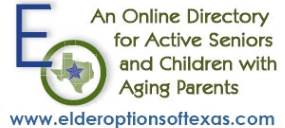What is a Residential Care Home?
In Texas, a residential care home (also known as a personal are home) is a private residence most often within a subdivision that provides personal care services, assistance and supervision to four or more persons. They offer a smaller, more intimate / homelike setting, ideal for persons who might not do well with the larger assisted living facilities. They typically provide meals, laundry, housekeeping, medication supervision, assistance with activities of daily living and activity programs.
Texas Health and Human Services licenses, certifies and surveys assisted living (personal care / residential care facilities) for compliance with state and federal laws and regulations. Through these regulatory activities, HHS protects Texas citizens receiving these services.
Type A and B Licensure
Type A - In a Type A facility a resident must be physically and mentally capable of evacuating the facility unassisted. This may include the mobile non-ambulatory persons such as those who are in wheelchairs or electric carts and have the capacity to transfer and evacuate themselves in an emergency. This resident does not require routine attendance during nighttime sleeping hours and must be capable of following directions under emergency conditions.
Type B - In a Type B facility a resident may require staff assistance to evacuate and may be incapable of following directions under emergency conditions. They may require attendance during nighttime sleeping hours. The resident may not be permanently bedfast, but may require assistance in transferring to and from a wheelchair.
Sizes by Definition
Small - Small facilities are defined as those with 16 residents or less.Large - Large facilities are defined as those with 17 residents or more.
Remember, when finding a personal care home keep in mind that in the state of Texas, they are licensed according to size, type and building safety features so be sure to ask what type of license they have. *** Some personal care homes host three or fewer residents, and therefore, do not require licensing.
Monthly Cost
Living in a residential care home is often half the cost of nursing home care, and in some states, it is even more affordable than assisted living care. However, cost can vary depending on the geographical location of the residential care home, as well as, the types of services needed.
Monthly fees run anywhere from $1,500 a month to $4,500 each month; with dementia care costing even more. Most residential care homes have private rooms available for their residents as well as shared rooms.
Medicare does not cover the cost of personal care homes. Traditionally, Medicare does not cover the costs of assisted living (personal care homes) or long-term care facilities. However, Medicare will cover qualified healthcare costs while your loved one is living at a certain facility. Medicare is more often used to pay for a skilled nursing facility or home health care.
As an example, if your mother requires skilled care, Medicare will cover rehabilitation and nursing home care. However, it won't cover custodial or intermediary care. For example, it won't cover an at-home health aide unless one is determined to be medically required.
Custodial care is non-medical assistance -- either at home or in a nursing or assisted-living facility -- with the activities of daily life (such as bathing, eating, dressing, using the toilet) for someone who's unable to fully perform those activities without help.
The biggest difference is that some personal care homes accept Medicaid to help cover the costs of residency but typically have long wait lists. In addition to private funds, other programs such as the Veteran Aid and Attendance Benefits (part of an Improved Pension Benefit), may be available to help pay for room and board.
In summary, when choosing a personal care home for a loved one, keep in mind that in Texas they are licensed according to size, type and building safety features. Therefore, it's always a good idea to ask what type of license they have; Type A or B - large or small.
Related Articles:
Elder Options of Texas
Copyright 2001-2024
All Rights Reserved
DISCLAIMER: Links to other websites or references to products, services or publications do not imply the endorsement or approval of such websites, products, services or publications by Elder Options of Texas. The determination of the need for senior care services and the choice of a facility is an extremely important decision. Please make your own independent investigation.


